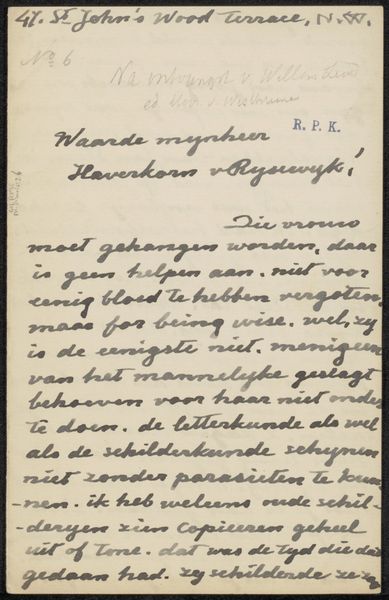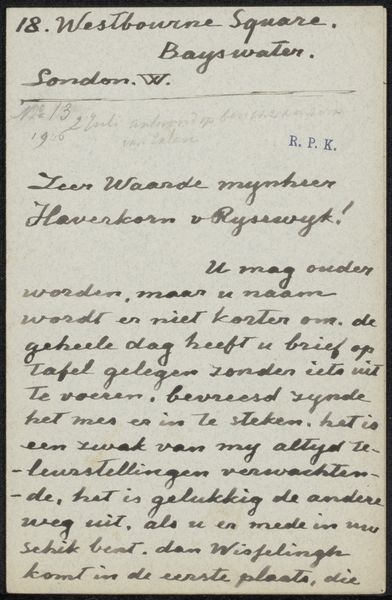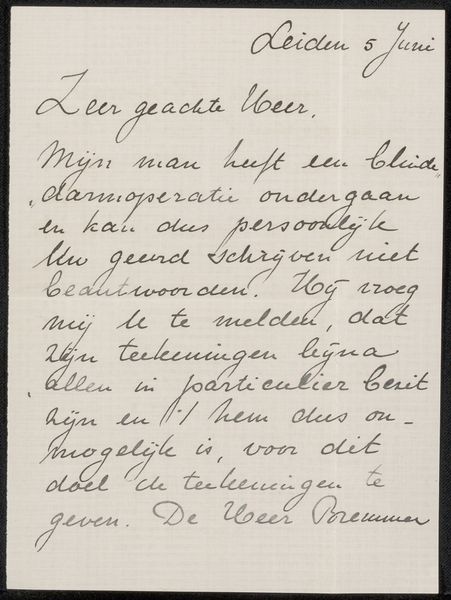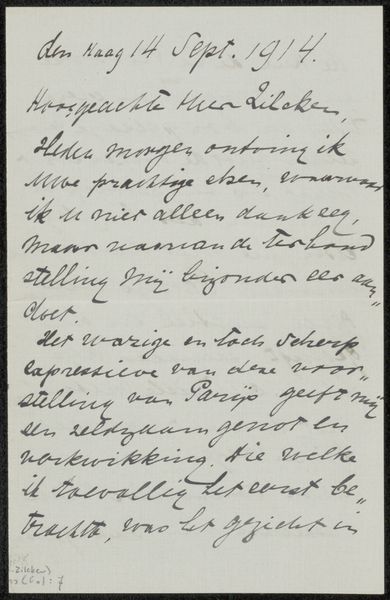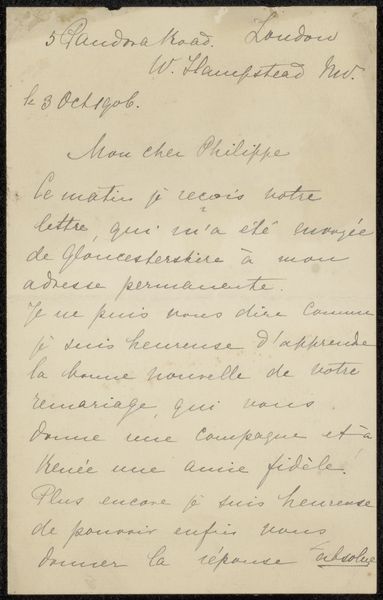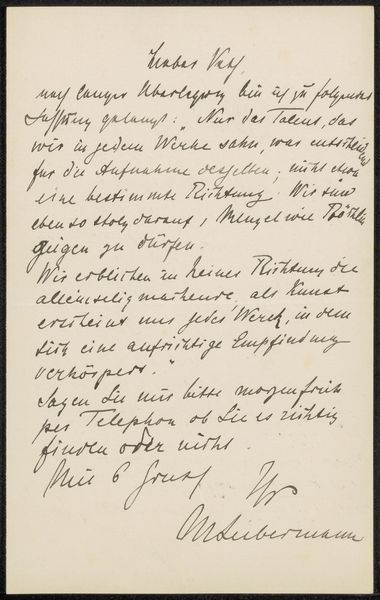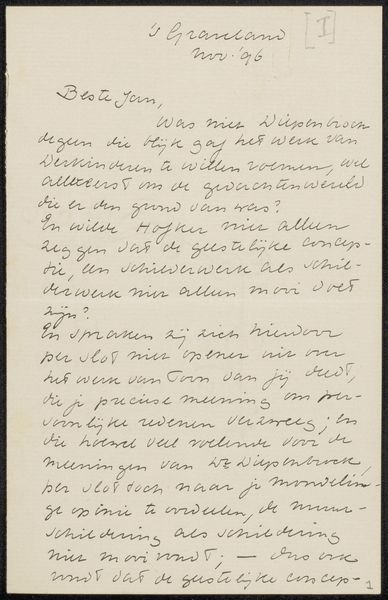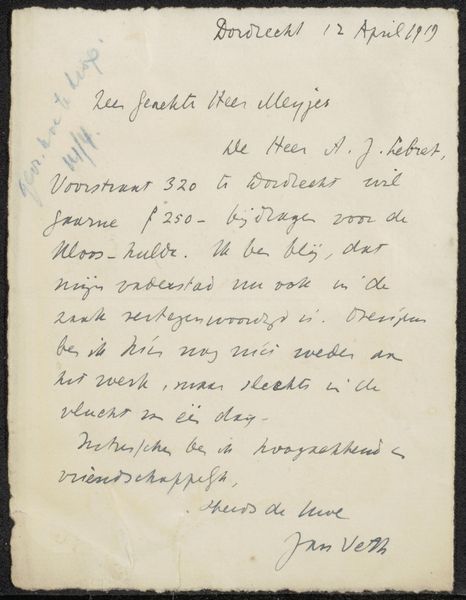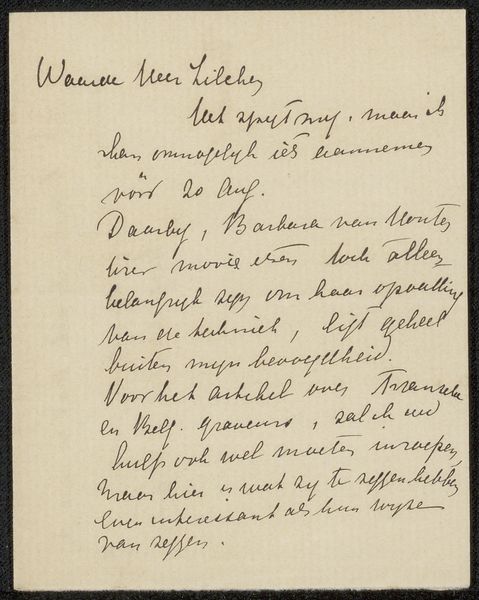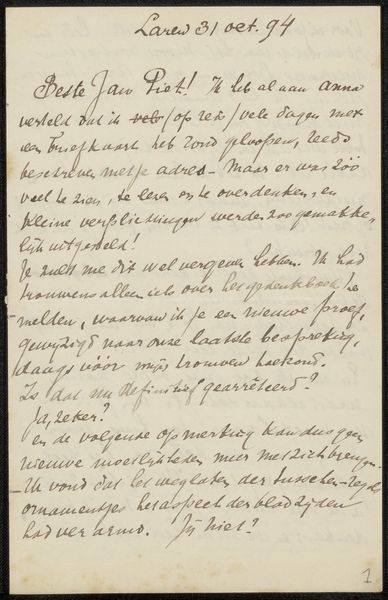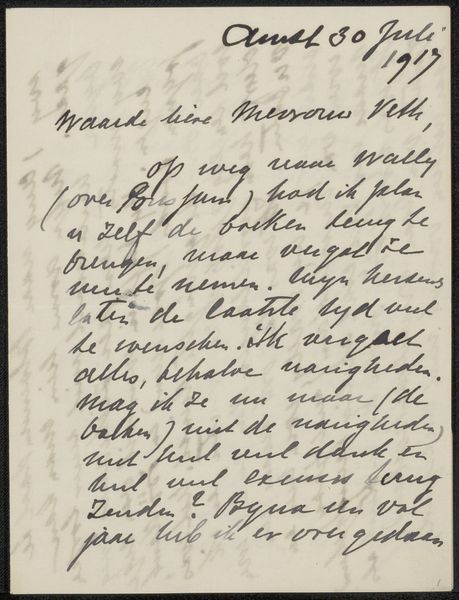
drawing, paper, ink, graphite, pen
#
portrait
#
drawing
#
hand written
#
script typography
#
hand-lettering
#
hand drawn type
#
hand lettering
#
paper
#
ink
#
hand-written
#
hand-drawn typeface
#
thick font
#
pen work
#
graphite
#
pen
#
handwritten font
#
calligraphy
Copyright: Rijks Museum: Open Domain
Curator: The first thing that strikes me about "Brief aan Philip Zilcken" by Jo Geul is its directness. It's not striving for painterly illusion, it's just the plain labor of handwriting on paper, with graphite and ink, of course, made before 1917. What catches your eye? Editor: Well, at first glance, I'm struck by its intimacy. It feels like a glimpse into a private moment. Given that it is a letter, of course it would, by its very nature, feel like that. How do you interpret the use of handwriting itself as part of the artwork's meaning? Curator: The handwriting IS the art. We are presented with a tangible connection to the artist through the very strokes of their hand. We should focus on the historical context. Think of the late 19th and early 20th centuries: increasing industrialization and mass production changed writing itself and also changed what was valued in art. Jo Geul, like others in the Arts and Crafts movement, seems interested in calling attention to handmade work, even in something as seemingly utilitarian as a letter. Doesn't the act of choosing to preserve this handwritten document, to display it, implicitly elevate the everyday labor? Editor: That makes a lot of sense. It reframes how we view something as common as handwriting, especially compared to printed text of the time, elevating its craft. So it is the way in which Geul composed a letter that gives it its aesthetic value? Curator: Precisely. The labor, the materiality, the consumption of writing as an artform--all collide in this piece. If this were typeset instead of hand-written, would you value it less? I believe the imperfection, the human touch is central here. Editor: I do think you’re right. It’s amazing to think about how a simple letter can tell us so much about artistic values and social context of a certain time. Curator: Yes, a humble artifact, rich with information on how we consider work and production!
Comments
No comments
Be the first to comment and join the conversation on the ultimate creative platform.
